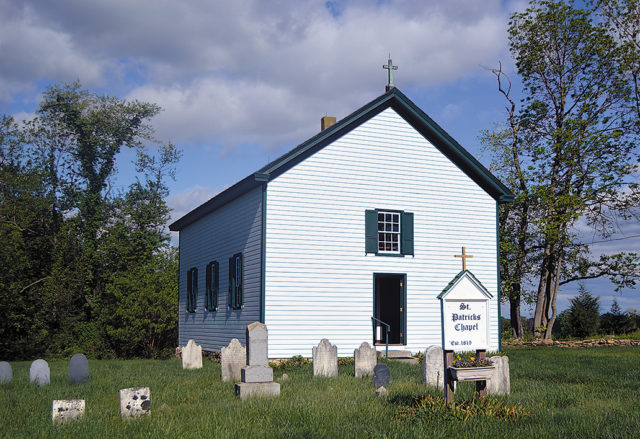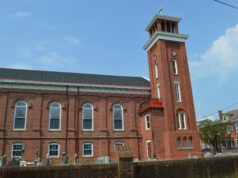A small country church said to be a symbol of religious freedom will begin a yearlong bicentennial celebration with Mass on Sept. 1.
St. Patrick’s Chapel, in the far northwestern corner of Cecil County, Md., was built by Irish Catholic immigrants who came to the area to build a canal along the rapids of the lower Susquehanna River and to work in lumber and mining industries.
Bill Pare, spokesman for the St. Patrick’s Chapel Historical Society, said Catholics in Ireland were disenfranchised in the early 19th Century. “At that time, Catholics were not allowed to build churches in Ireland, but they did have that right here in America, guaranteed by the Bill of Rights.”
Father Jay McKee, pastor of Good Shepherd Parish in Perryville, will celebrate the Mass at the frame church north of Conowingo, in what formerly is known as Pilot Town. St. Patrick’s is one of four churches within Good Shepherd Parish, and the only one not used on a weekly basis.
“It’s always a thrill to go to a chapel and say Mass in that intimate space,” Father McKee said. “It’s a very prayerful and very spiritual venue.”
Since the church can seat only about 100 people, a tent will be set up with additional seating and a video feed, Pare said.
The church and grounds open at 9:30 a.m., with a PowerPoint presentation on its history starting at 10. Mass begins at 11. Historical memorabilia and bicentennial mementoes will be on display.
The observance will continue at quarterly Masses through September 2019. Details for those Masses are yet to be announced.
St. Patrick’s is the second oldest Catholic church in Cecil County. The oldest is the Shrine of St. Francis Xavier in Warwick, dedicated in 1797. Both are historic churches on the Diocese of Wilmington’s 150th Anniversary pilgrimage tour, on the first Saturday of each month through March.
The church and its cemetery are on a half-acre lot on Pleasant Grove Road, just south of the Pennsylvania state line.
Both the exterior and interior of the church are as close to the original structure as possible, Pare said, thanks to a $180,000 renovation. The altar, side tabernacle, large candle stands, and altar rail were part of the original church, he said. The Stations of the Cross and stenciling on the wall are reproduced as shown in photographs from the 1930s, apparently for the 125th anniversary Mass.
Bishop Malooly rededicated St. Patrick’s in 2010.
That St. Patrick’s Chapel still stands today seems almost miraculous. After the wooden church was built, Mass was celebrated every fifth weekend (10 times a year) by priests from Harford County, across the Susquehanna.
By the end of the 19th Century, the canal traffic gave way to railroads that crossed the Susquehanna downriver, just north of the Chesapeake Bay, bypassing the Conowingo area. In 1927, construction of the Conowingo Dam flooded the old town of Conowingo. Most of the Irish immigrants who had come to the Conowingo area moved away, reducing the church’s population base.
St. Patrick’s fell into major disrepair by 1934, when a Mass marked its 125th anniversary. Plans to restore St. Patrick’s fell to the wayside, victim of the Great Depression and World War II. Despite sporadic repairs and renovations, the church had drastically deteriorated again by the start of this century.
Efforts to renovate the church began anew with the creation of the historical society, which raised the money needed for the renovations.







